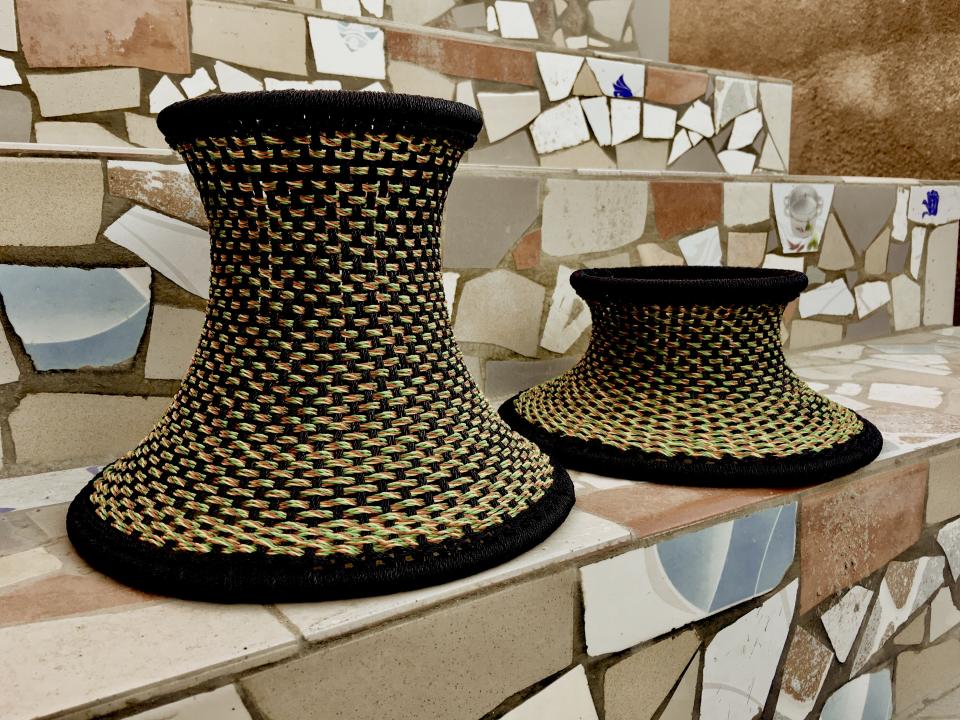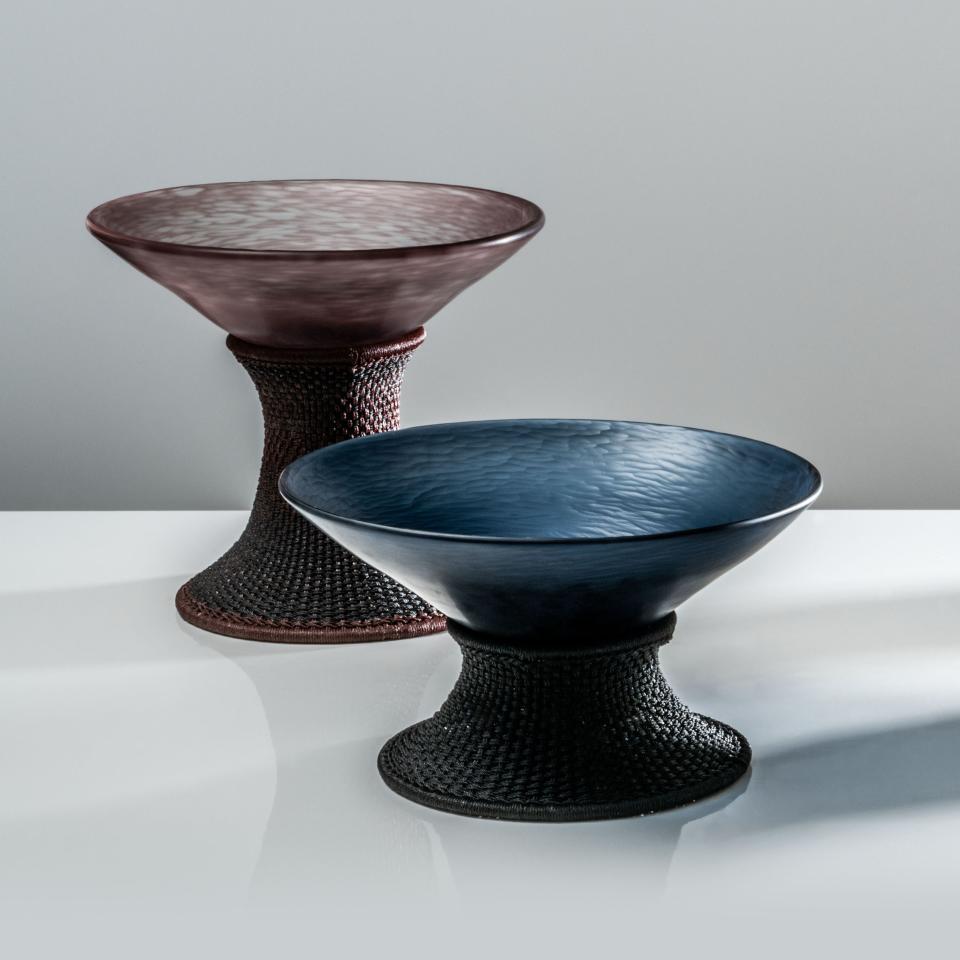Venini Glass and Marc Thorpe Merge Senegalese Weaving and Murano Glass in a New Collaboration
Marc Thorpe grew up surrounded by Venini glass.
“My great-granduncle is Paolo Venini,” explains the New York–based architect and designer. “My grandmother was the first Venini born Stateside. My mother would always tell me, ‘This is your history.’”
So when his friend, the Venetian designer Luca Nichetto, introduced Thorpe to the storied glassmakers of Venini, “it was a dream come true,” he recalls. “All of the greatest Italian designers and architects have set foot in Venini’s furnace.”
A few years later, they unveil the fruits of their collaboration: Unity, a series of vessels made in collaboration with the Senegalese weavers Thorpe met while working in Dakar on a collection of outdoor furniture for Moroso. The collection of 10 pieces will be unveiled at New York gallery Atelier Courbet on Thursday.

“It started with traditional African headrests,” Thorpe explains of the designs, in which translucent glass bowls carved with the textural battuto technique perch on woven, basketlike structures, “We thought the base could be handwoven in Dakar and the glass hand-produced in Murano.”
Both places have rich histories of craft. On the Italian island of Murano, glassblowers—now a major tourist lure—have created colorful confections for centuries. Similarly, in the seaside towns of Senegal, artisans have woven the ropes and nylon threads of fishing nets into colorful, patterned baskets for generations. Uniting these two craft traditions, Thorpe says, depicts “the landscape of my experiences and travel.”
It also marks the first time that storied glassmaker Venini—known for its collaborations with famous architects ranging from Carlo Scarpa and Ettore Sottsass to Peter Marino—has teamed up with artists from the African continent. Thorpe pays tribute to his collaborators with three brilliant versions of the vessels in red, green, and yellow—the colors of the Senegal flag.

But while those vibrant designs—with a hint of Memphis-era flair—are seriously eye-catching, the design started out with a decidedly different aesthetic. “I didn’t want the piece to feel new,” he explains. “I wanted it to feel like somebody had pulled it out of the dirt—a muted tone, more austere, like an artifact. I wanted it to feel almost like wood.”
That’s why Thorpe went with a moodier palette for the rest of the collection, and why he chose to employ the battuto technique, a method of carving the surface of glass that leaves a somewhat distressed finish. Introduced to Murano by Scarpa in the 1930s and showcased a few years later at the Venice Biennale, the inventive technique pioneered by Venini was the perfect textural foil to Senegalese basket weavings, done in nylon thread on metal frames.
Thorpe acknowledges the importance of bringing a traditional West African craft into conversation with its European equivalent in the form of a luxury product. “It’s a beautiful parallel,” he says. “It gets back to a design process that feels free. You can really live that in Senegal. You live that as well in the furnaces of Murano.”
More from AD PRO: Has Instagram Made Design Shows Better?
Sign up for the AD PRO newsletter for all the design news you need to know

